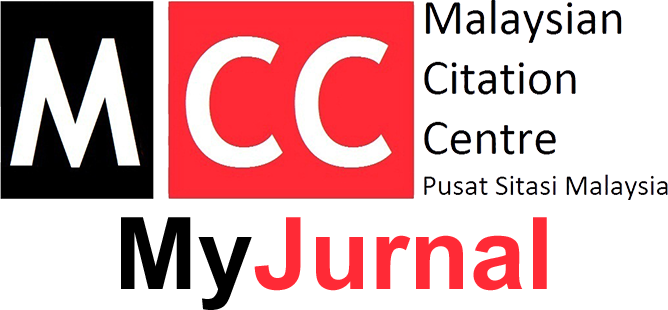THE PERCEPTION, BEHAVIOURS AND ACCEPTANCE OF COVID-19 VACCINE AMONG MALAY SENIOR CITIZENS
A QUALITATIVE STUDY
DOI:
https://doi.org/10.32890/jps2022.25.2Abstract
Despite concerted efforts taken since the launched of immunization campaign for Malaysians, the country still wary of individuals
who consistently disputing the validity and legality of the vaccine. Further to that, there are also Malaysia citizens who do not believe
in the effectiveness of the vaccine which lead to refusal in receiving it voluntarily. The study aimed to (i) to explore the understanding
of the Malay senior citizens on health communication campaigns related to the COVID-19 vaccination programmes, (ii) to review
the sources of information used by the senior citizens in obtaining information related to the vaccine and COVID-19, and (iii) to explore
the behaviours of the senior citizens and their acceptance of the COVID-19 vaccine. The study involved 10 Malay senior citizens
within the range age group of 55-65 years. In order to seek diverse insights on the information seeking behaviour and the preferred
sources, the study focused on the influence of cultural, religious diversity and the implementation of health communication campaigns by the government on the effectiveness of the COVID-19 vaccine. Further, the study also explored the level of understanding and perception on the effectiveness of COVID-19 vaccine among senior citizens. Qualitative methodology was applied using focus group discussion in the data collection, and NVIVO software was used for analysis. The study found hesitancy on the vaccine resulting from the unsure sources of information. Senior citizens from Malay community were very concerned on receiving the vaccine. Additionally, the result indicated that the national immunisation campaign is less effective especially to those who reside in rural areas. The majority of the participants obtained information sources related to vaccines and COVID-19 through social media compared to mainstream media. Inasmuch the overseas media provided more authentic information than the local media, it was equally significant that the informants also found the information by the National Security Council (MKN) and the Ministry of Health Malaysia (MOH) to be authentic and were always referred to.
Downloads
References
Bandura, A. (1994). Social cognitive theory of mass communication . In J. Bryant, and D. Zillmann, Media Effects: Advances in Theory and Research. Hillsdale, NJ: Lawrence Erlbaum Associates.
Brashers DE. Communication and uncertainty management. J Commun. 2001;51:477–97. doi: 10.1111/j.1460-2466.2001.tb02892.x.
Carey JW. Communication as culture: essays on media and society Winchester, MA: Unwin Hyman; 1989.
Carleen, H. (2009). Take two aspirin and tweet me in the morning: how Twitter, Facebook, and other social media are reshaping health care. Health Aff (Millwood), 28(2):361–8. doi: 10.1377/hlthaff.28.2.361.28/2/361.
Cho H, Salmon CT. Unintended effects of health communication campaigns. J Comm; 57:293-317.
Cotten, S., and Gupta, S. (2004). Characteristics of online and offline health information seekers and factors that discriminate between them. Social Science and Medicine, 59:1795-1806.
Fauziah, A., Chang, P., Normah, M., Faridah, I., Wan Amizah, W., and Dafrizal, S. (2012). Information Propagation and the Forces of Social Media in Malaysia. Journal of Asian Social Sciences, 71-76.
Foo, Chin, Tan & Phuah, The impact of COVID-19 on tourism industry in Malaysia. Current Issues in Tourism, 1-5, 2020.
Hayes H, Social media and inspiring physical activity during COVID-19 and beyond. Managing Sport and Leisure, 1-8, 2020.
Ismail Sualman & Salmi Othman. . Understanding and acceptance of COVID-19 vaccine among young women: a qualitative study. Journal of Media and Information Warfare Vol. 14(1), 93-106, June 2021.
Ismail Sualman, 2021. Kesan COVID-19 terhadap soio-ekonomi di Negeri Selangor. Laporan Kajian Universiti Teknologi MARA.
Ismail Sualman. (2021). Kempen imunisasi tingkat keyakinan perangi pandemik. Berita Harian Online. https://www.bharian.com.my/rencana/komentar/2021/02/787413/kempen-imunisasi-tingkat-keyakin an-perangi-pandemik.
Kementerian Kesihatan Malaysia. (2021). Situasi Terkini Covid-19 di Malaysia. http://covid-19.moh.gov.my/terkini
Lapinski MK, Rimal RN. An explication of social norms. Commun Theory. 2005;15:127–47. doi: 10.1111/j.1468-2885.2005.tb00329.x..
Lapinski MK, Rimal RN. An explication of social norms. Commun Theory. 2005;15:127–47. doi: 10.1111/j.1468-2885.2005.tb00329.x.
Meriam, S. . (1998). Qualitative research and case study application in education. Jossey-Bass Publishers.
Mitchell MM, Brown KM, Morris-Villagran M, Villagran PD. The effects of anger, sadness and happiness on persuasive message processing: a test of the negative state relief model. Commun Monogr. 2001;68:347–59. doi: 10.1080/03637750128070.
Moges, Z., & Amberbir, A. (2011). Factors Associated with Readiness to VCT Service Utilization among Pregnant Women Attending Antenatal Clinics in Northwestern Ethiopia: A Health Belief Model Approach. Ethiopian Journal of Health Sciences, 21(Suppl), 107–115.
Morse, J. M., and Richards, L. (2002). Readme First for a User’s Guide to Qualitative Methods. Sage Publications. 21.Mullard, A. (2020). Covid-19 vaccine development pipeline gears up. Lancet (London, England), 395(10239), 1751–1752. https://doi.org/10.1016/S0140-6736(20)31252-6
Othman Talib. (2019). Analisis Data Kualitatif Dengan Atlas Ti. UPM Press.
Parrott R. Emphasizing “communication” in health communication. J Commun. 2004;54:751–87. doi: 10.1111/j.1460-2466.2004.tb02653.x.
Pasick, R. J., & Wallack, L. (1990). Mass Media in Health Promotion: A Compilation of Expert Opinion. International Quarterly of Community Health Education, 9(2), 89–110. https://doi.org/10.2190/fv2t-qgu8-pm93-kc81
Reid, D. (1996). How effective is health education via mass communications? Health Education Journal, Vol. 55, No. 3, pp. 332–44.
Rimal RN, Real K. How behaviors are influenced by perceived norms: a test of the theory of normative social behavior. Communic Res. 2005;32:389–414. doi: 10.1177/0093650205275385.
Rimal RN, Real K. Perceived risk and efficacy beliefs as motivators of change: use of the risk perception attitude (RPA) framework to understand health behaviors. Hum Commun Res. 2003;29:370–99.
Rimal RN, Real K. Perceived risk and efficacy beliefs as motivators of change: use of the risk perception attitude (RPA) framework to understand health behaviors. Hum Commun Res. 2003;29:370–99.
Rogers, E. M. (1976). Communication and development: The passing of the dominant paradigm. In E. M. Rogers (ed.), Communication and development: Critical perspectives. Beverly Hills, CA: Sage, pp. 121–148.
Schooler, C., Chaffee, S., Flora, J., and Roser, C. (1998). Health campaign channels: tradeoffs among reach, specificity, and impact. Hum Commun Res, 24(3):410–32.
Short, J., Williams, E., and Christie, B. (1976). The social psychology of telecommunications. Hoboken, NJ: John Wiley and Sons, Ltd.
Snyder, L. (2007). Health communication campaigns and their impact on behaviour. Journal of Nutrition Education and Behaviour, 39: S32-40.
Snyder, L., Hamilton, M., Mitchell, E., Kiwanuka-Tondo , J., Fleming-Milici, F., and Proctor, D. (2004). A meta-analysis of the effect of mediated health communication campaigns on behavior change in the U.S. J. Health Commun, 9(1S): S71–S96.
Sorensen, K., Van Den Broucke, S., Brand, H., Fullam, J., Doyle, G., Pelikan, J., and Slonszka, Z. (2012). Health Literacy and Public Health: a Systematic Review and Integration of Definitions and Models. BMC Public Health, (1) 80. (DOS 1995a).
Su . 2020. Chinese mental health burden during the COVID-19 pandemic Y Huang, N Zhao - Asian journal of psychiatry, 2020 - ncbi.nlm.nih.gov
Witte K. Fear control and danger control: a test of the Extended Parallel Process Model (EPPM). Commun Monogr. 1994;61:113–34.







4.png)




